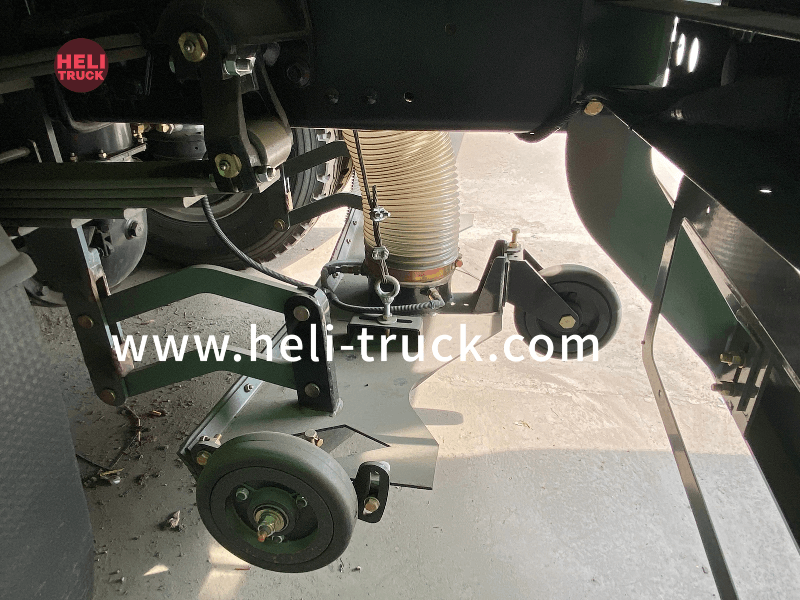Ensuring Water Tank Truck Safety Guidelines and Best Practices

Introduction
Water tank trucks play a crucial role in various industries, including construction, agriculture, and firefighting. These specialized vehicles are designed to transport and distribute large volumes of water efficiently. However, operating a water tank truck comes with inherent risks that must be managed to ensure the safety of both the driver and those in the vicinity. In this article, we will discuss the importance of water tank truck safety, key guidelines and best practices for safe operation, and the role of proper maintenance in preventing accidents and injuries.
Importance of Water Tank Truck Safety
Water tank trucks are heavy-duty vehicles that are typically used to transport water for various purposes, such as dust suppression, irrigation, and firefighting. These trucks are equipped with large tanks that can hold thousands of gallons of water, making them susceptible to rollovers and other accidents if not operated safely. Ensuring the safety of water tank truck operations is crucial to prevent injuries, protect property, and maintain the integrity of the environment.
Key Guidelines for Water Tank Truck Safety
1. Driver Training and Certification: Before operating a water tank truck, drivers should undergo comprehensive training on vehicle operation, safety procedures, and emergency protocols. Drivers should also be properly certified and licensed to operate commercial vehicles.
2. Pre-Trip Inspections: Conducting thorough pre-trip inspections is essential to identify any potential issues with the water tank truck before hitting the road. Drivers should check the vehicle's brakes, tires, lights, and other essential components to ensure they are in good working condition.

3. Load Securement: Properly securing the water tank and its contents is critical to prevent shifting during transport, which can lead to stability issues and rollovers. Drivers should follow manufacturer guidelines for securing the load and use appropriate tie-downs and restraints.
4. Safe Driving Practices: Drivers should adhere to safe driving practices, including obeying speed limits, maintaining a safe following distance, and avoiding distractions while behind the wheel. Defensive driving techniques should be employed to anticipate and react to potential hazards on the road.
5. Emergency Response Plan: Having a well-defined emergency response plan in place is crucial in the event of an accident or spill involving the water tank truck. Drivers should be trained on how to respond to emergencies quickly and effectively to minimize the impact on safety and the environment.
Best Practices for Water Tank Truck Safety
1. Regular Maintenance: Routine maintenance of the water tank truck is essential to ensure that all components are functioning correctly and to prevent breakdowns or malfunctions while on the road. This includes checking fluid levels, inspecting hoses and fittings, and performing regular tune-ups.
2. Proper Loading and Unloading Procedures: When loading or unloading the water tank truck, drivers should follow proper procedures to prevent spills, leaks, or accidents. Overloading the tank can affect the vehicle's stability and braking performance, while improper unloading can lead to spills and environmental contamination.
3. Route Planning: Drivers should plan their routes carefully to avoid narrow roads, steep inclines, or other challenging terrain that may pose risks to the water tank truck's stability. Route planning should also consider factors such as traffic conditions, weather, and potential hazards along the way.
4. Communication and Coordination: Clear communication and coordination between the driver and any support personnel are essential for safe water tank truck operations. Visit Your URL should communicate effectively with ground crews, supervisors, and other drivers to ensure that everyone is aware of the vehicle's movements and activities.
5. Personal Protective Equipment (PPE): Drivers and other personnel involved in water tank truck operations should wear appropriate personal protective equipment, such as gloves, goggles, and high-visibility clothing, to protect themselves from potential hazards and accidents.
Conclusion
Ensuring water tank truck safety is a shared responsibility that involves drivers, supervisors, maintenance personnel, and other stakeholders in the operation. By following key guidelines and best practices for safe operation, conducting regular maintenance, and prioritizing safety at all times, the risks associated with water tank truck operations can be minimized, and accidents can be prevented. Ultimately, prioritizing safety not only protects individuals and property but also upholds the integrity of the environment in which these vehicles operate.
